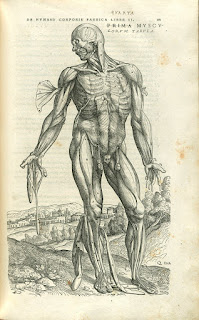Week 8: Nanotech + Art
When you ask someone what they think of when they hear the word nanotechnology, the typical
 |
| Nano probes from Star Trek |
response probably has something to do with the science fiction or dystopian movies that have the main characters using some outlandish technology. This was personally the line of thought I initially took, thinking of Star Trek and the way nanotechnology is used by the bad guys to essentially brainwash people. But in reality, use of nanotechnology in this way is improbable. Instead, nanotechnology is being used in ways that help people. For example, the army used nanotechnology to develop “smart shirts” that track the vital signs of the person wearing them.
 |
| Example of commercial smart shirt |
This same technology has been commercialized and people can buy their own smart shirts to track things like sleep patterns or vital signs during exercise.
Nanotech is also being used in other areas such as medicine and pharmaceuticals. Here, nanotechnology allows treatment to be specified and target a very specific part of the body. Pharmaceuticals such as this are mainly being used to target tumors as part of cancer treatment but as more research is done, the possibilities for nano medicine are endless.
While the connection to nanotechnology is more obvious in fields such as engineering and medicine, there are also connections to art. In fact, the earliest use of nanotechnology, the Scanning Tunneling Microscope, produces its own works of art by mapping the 3D topography of molecules and creating a 2D rendering of them. Today, artists are using nanotechnology in incredible ways. At Berkeley’s nanotechnology research group, Katie Nichols, the artist in residence, uses nanotechnology to recreate the iridescent hues found on the wings of the Morpho butterfly. The nanotechnology is what allows the paint color to change as it dries and when it is viewed under different lights.
 |
| Glass painted with nanotechnology paint created by Katie Nichols |
Sources:
Gimzewski, Jim and Vesna, Victoria. “The Nanomeme Syndrome:Blurring of Fact and Fiction in the Construction of a New Science.” n.p. Accessed 26 May, 2017.
Gimzewski, Jim. “Nanotech for Artists Part 4.” DESMA 9. Lecture.
"Nanoprobes." StarTrek.com. N.p., n.d. Web. 26 May 2017. <http://www.startrek.com/database_article/nanoprobes>.
“Health Research - Hexoskin Biometric Shirt for Remote Monitoring.” Carre Technologies inc (Hexoskin), www.hexoskin.com/pages/health-research. Accessed 26 May 2017.
Ouellette, Jennifer. “This Artist "Paints" With Nanoparticles Inspired by Butterfly Wings.” Gizmodo, Gizmodo.com, 17 Dec. 2015, gizmodo.com/this-artist-paints-with-nanoparticles-inspired-by-but-1746583925. Accessed 26 May 2017.


I really like your discussion of various applications of nanotechnology. Like you summarized here, nanotechnology can be used to treat disease, monitor vital signs, and map structures of molecules. In addition, because nanoparticles of different sizes reflect different colors, they can be used as non-toxic coloring in cosmetics and oil paint. I have also discussed in my blog how silver nanoparticles in socks can damage bacteria and keep the sock clean. However, the wide application of a technology means huge reliance on it and magnification of any potential problems of the technology. Internet has been widespread and the security of personal information and many other problems followed. Considering nanotechnology in the same way, we should be cautious of its downsides as it becomes increasingly widely applied.
ReplyDeleteIt was very interesting to read about Katie Nichols. i too had that opinion of nanotechnology, it seemed like a concept far beyond my read. What might be interesting is to go into detail about the negative side of nanotechnology, and to go into more detail about how nanotechnology is used in medicine.
ReplyDelete